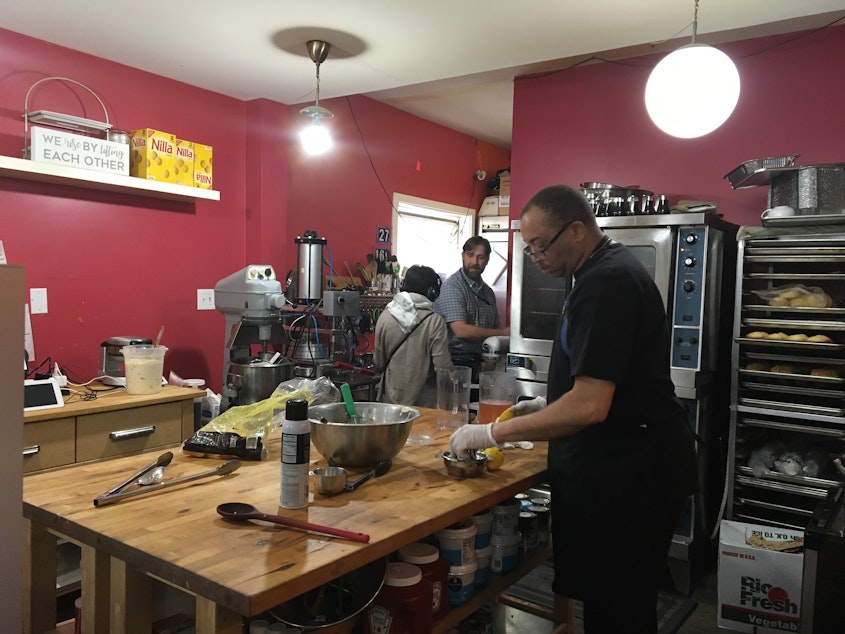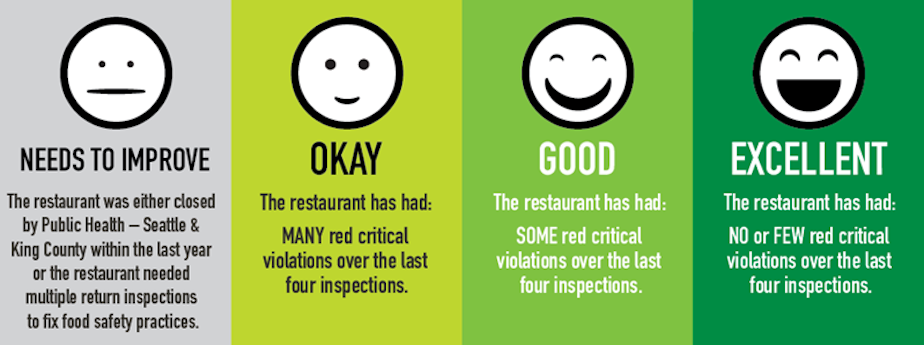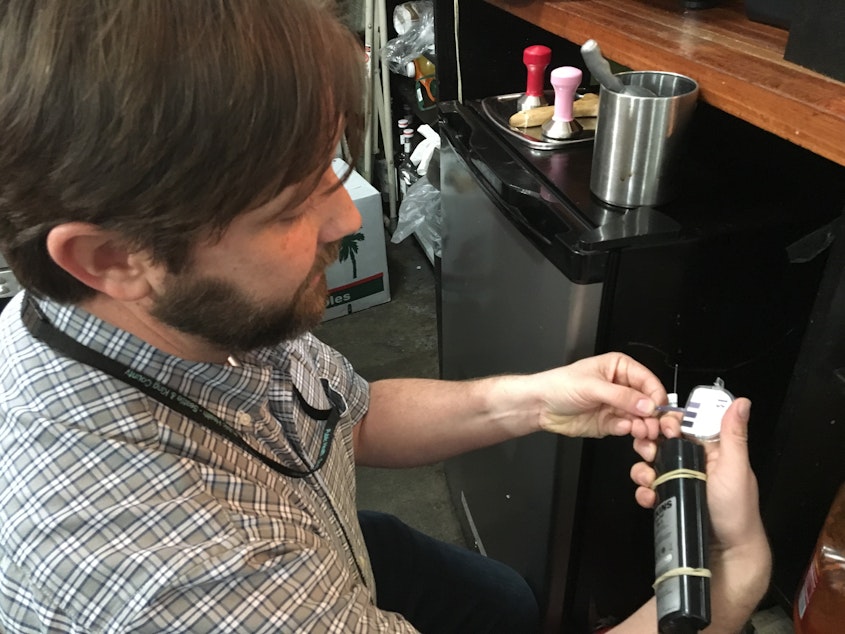Is my food safe to eat? What those food safety emojis mean

A listener asked KUOW: “Recently my favorite Korean BBQ joint received a merely 'Good' rating — should I be worried?”
The short answer: It’s fine. Still fine even if your favorite sushi restaurant is rated "Okay." All restaurants that are operating have met the minimum standard to stay open.

There are four ratings ranging from "Excellent" to "Needs to Improve," all represented by emojis. If the sign says "Needs to Improve," it doesn’t mean "stay away." But certain food handling practices can affect a restaurant’s score.
And I hear you, it’s complicated. Our rating system IS different from other cities.
To get an idea of what’s behind the ratings, we tagged along with food inspector Mike Simpson as he made an unannounced inspection at Simply Soulful in Madison Valley.
First, Simpson looked at the menu. “We need to know what foods to expect,” he explained, “so we can look for the ingredients to make sure we’re not missing any part of the picture.”
Sponsored
Simpson headed to the kitchen, washed his hands, checked the water temperature and made sure there were soap and paper towels nearby.
Then, the fridge. On the top two shelves were milk, cream, sauces, cheese and packaged sausages. Farther down on the bottom shelf were raw fish and raw chicken. Simpson looked to make sure there weren't any raw meats stored above any ready-to-eat foods.
“We always want to have raw meats down below because of the risk of cross contamination from bacteria,” he said.

Sponsored
Simpson checked on these food handling practices and procedures because they’re considered high risk factors that could cause food borne illnesses.
How well restaurants do when it comes to food safety affects their scores.
Restaurants that have zero to few violations are rated "Excellent." (You can tell by the big smiley face.) Those rated "Good" have had some violations, while an "Okay" face means they’ve had many.
Finally, a "Needs to Improve" rating shows a neutral face. It means inspectors had to close the restaurant in the last year, or had to come back multiple times before issues were fixed.
If you want to know what those violations are, or to get a full picture of the restaurant’s scores over a period of time, you have to go to the county’s website.
Sponsored
The rating that you see on the placard is not about how the restaurant did at the last inspection. It reflects its food safety performance over time.
“It’s an average of four unique unannounced inspections,” says Eyob Mazengia, assistant director for King County’s food and facilities program.
The county’s rating system is only two years old. Before it launched, the county heard from restaurant owners who were concerned about the scores. “They didn’t want one bad day that they may have to represent the overall score on their window,” he said.
Mazengia says the county tries to make sure the scores are fair by accounting for variations in inspection styles — some inspectors might be lenient while others could be stringent.
Sarah Schacht is the activist who brought posting King County’s food safety scores into the open. She got E. coli twice — once as a child, then as an adult, so for her, food safety is personal.
Sponsored
Before that, information about restaurant inspections were available only online.
“The point of posting restaurant scores is to have something simple and clear that works for consumers,” she said.
Schacht says the emoji rating system provides some information, but it puts the burden on consumers to look up the records. She says it would be useful to have the scores in a data format that Yelp, Google and others could easily look up online.
“Increasingly we’re not even going into a storefront for food,” she said. "And we need better tools for consumers to be able to see scores wherever we are even if that’s in front of our phones.”
Schacht says food trucks need to be rated, too. The county says they’re next.
Sponsored
Later, at Simply Soulful in Madison Valley, Mike Simpson wrapped up his inspection. He entered his notes and scores on a computer: It got a zero, which means no critical violations. He filled out a placard with an "Excellent" rating.




